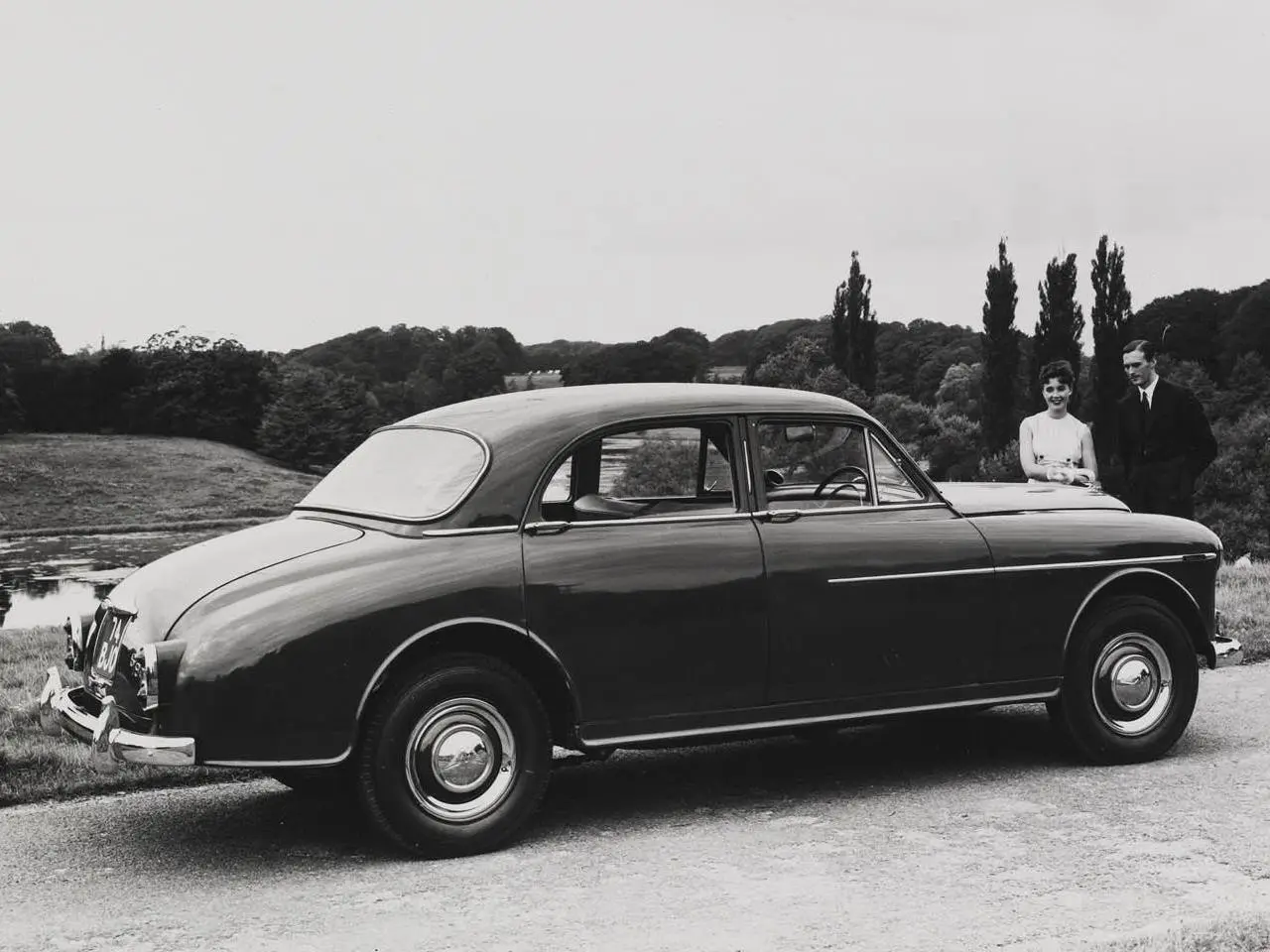THE MAGNIFICENT SEVEN GERALD PALMER BMC SALOONS
25 July 2023
There is a strong case for Gerald Palmer’s creations for the British Motor Corporation to be considered some of the most elegant saloons of their generation. In 1949 he was tasked with devising a new generation of models for MG, Riley and Wolseley – “There was no product planning, nothing. All I had to do was come up with ideas which I hoped were accepted. Luckily, they were!" Here are the seven illustrious members of that family.

1952 – Wolseley 4/44
The engine may have been the familiar 1,250cc Morris XPAG unit and there was that famous radiator grille, with its illuminated 'Ghost Light', but the styling was entirely new. Palmer later explained: "I had been to several Continental shows and had realised that some Italian styles were really wonderful. British styling, by comparison, was just pathetic." The price was £997 and Autocar thought 4/44 possessed “nice handling that raises it above the common run of family cars”.
1953 – MG Magnette ZA
A few Abingdon diehards complained the ZA had an Austin-developed twin-carburettor 1,489c BMC B-series engine, but many enthusiasts thought it a bargain at £914 7s 6d. The 80-mph top speed compared favourably with the 73 mph of its Wolseley stablemate and the MG stood two inches lower than the 4/44. Autosport thought the Magnette “ideal for fast touring, and capable of transporting four adults and their luggage in comfort and near-luxury”. Across the Atlantic, Tom McCahill raved in Mechanix Illustrated: “If you like fine machinery and a car that handles like a low-calorie Ferrari with the quality of a Tiffany diamond, then you will get a real kick out of the MG Magnette”.
1953 - Riley Pathfinder
The RHM series Pathfinder blended the famous Riley ‘Big Four’ 2.5-litre engine and the outgoing RMF torsion bar and wishbone independent front suspension with imposing bodywork. Social prestige could be yours for £1,382 7s 6d and the sales copy promised "remarkable roadholding qualities; stability with surging power. Fast cruising in luxurious comfort; fast cornering in perfect safety”. Meanwhile, John Bolster wrote in Autosport: "I have driven every Riley model produced in the last twenty five years and this RMH is the best to bear the name of Riley.”
1954 – Wolseley 6/90
The replacement for the Wolseley 6/80 made its bow at the 1954 London Motor Show. It was the first BMC car powered by the six-cylinder 2,639cc C-Series engine and, although the 6/90 resembled the Pathfinder, the only common panels between the Pathfinder and 6/90 are the front doors, boot lid and main body shell. Meanwhile, the copywriter worked overtime on this gem:
When Wolseley announce a new model there cannot be a more exciting expectation for that very typical Englishman, the man who likes his motor-car to be, in all things – in performance no less than appearance – exhilarating, discrete and distinguished.
In other words – “I drive a Wolseley 6/90 – I look down on him”.
The most famous role of the 6/90 was as a police car, even appearing on the front cover of the driving manual Roadcraft. By the late 1950s, 500 6/90s served with constabularies across the UK, as well as starring in many a fine B-film crime epic.
1956 – Wolseley 15/50
The 4/44, although an eminently respectable machine, offered the keen driver little in the way of performance. However, by June 1956 the replacement 15/50 featured the B-series engine in single carburettor form and even a floor gear lever instead of a column change. Best of all, “exhilarating sparkle" could be yours for a mere £961 7s.
1956 – MG Magnette ZB
Compared with the ZA, the ZB offered a top speed of 86 mph and an improved fascia. The price was £1,072 7s and Autocar found it "our fastest native 1½ litre four-door saloon". For an additional £25, you could order the striking-looking Varitone version, with a larger rear screen, flashing indicators instead of trafficators and a choice of tasteful duotone finishes.
1957 Riley Two Point Six
The Two Point Six debuted in August 1957, and some devotees were most unhappy that. unlike the outgoing Pathfinder, the engine was the BMC C-series unit. How, they argued, could what was essentially a Wolseley 6/90 Series III fitted with a rev counter, flashing indicators, your choice of two-tone paintwork and a slightly more powerful engine, ever be a true Riley? Nor at £1,411 7s was the Two Point Six a cheap car by any standards. Furthermore, Motor Sport grumbled that the steering and road holding were "not in keeping with its very considerable performance". Yet, Autosport regarded the Two Point Six as "just the sort of machine the successful businessman would like to park in front of his house”.
The year 1958 marked the start of the demise of the Palmer saloons, for that December the Pininfarina-styled Wolseley 15/60 replaced the 15/50, followed shortly afterwards by the demise of the ZB in favour of the Magnette Mk. III. In May 1959, the Riley Two Point Six came to an end with no direct replacement, and in July the imposing-looking Wolseley 6/99 succeeded the 6/90. By then Gerald Palmer had already been ousted by BMC’s management, and the corporation was embarking on a policy of ‘badge engineering’, partially to satisfy the demands of their complicated dealership network.
One consequence of this decision was a lack of sporting prestige saloons during the following decade. There were to be no BMC rivals for the BMW 'Neue Klasse', Lancia Flavia, Rover P6, Triumph 2000, Volvo 122S, Audi 100 C1 or even the Alfa Romeo Giulia. But such drastic lack of product planning cannot mar the impact of those seven Gerald Palmer saloons. And this writer still finds the Wolseley 6/90 one of the most handsome cars of the 1950s.
